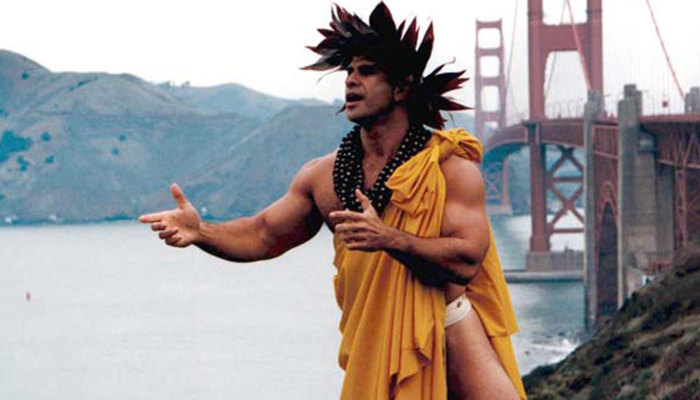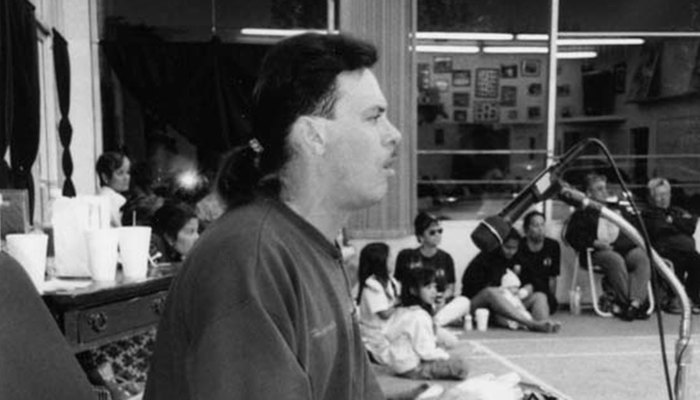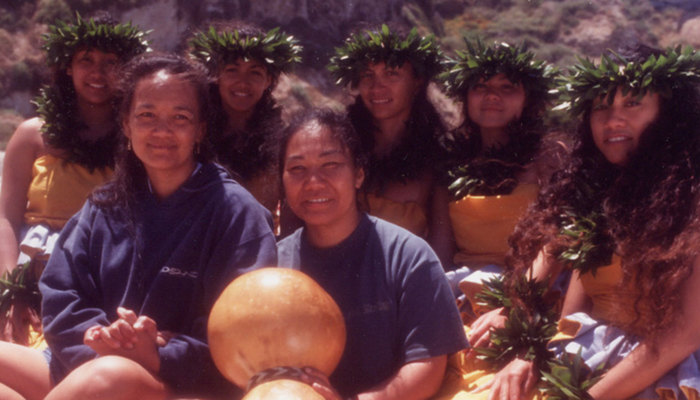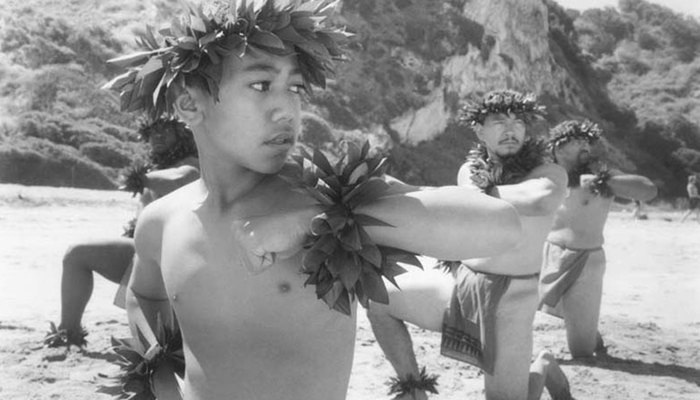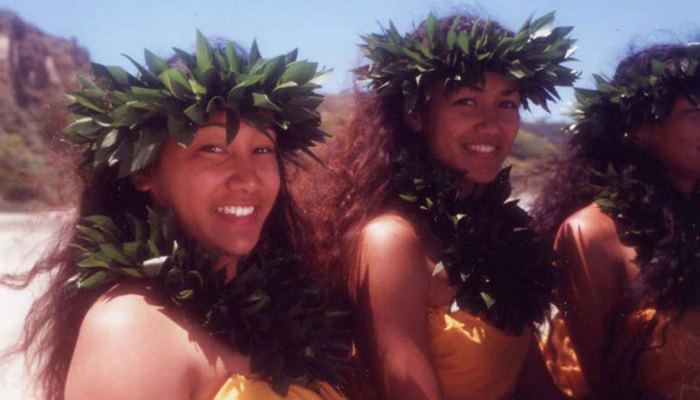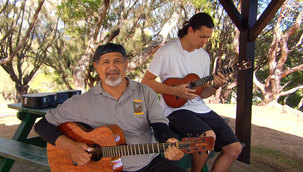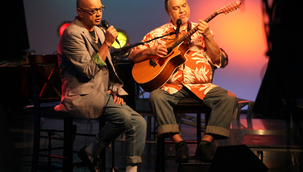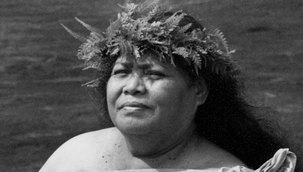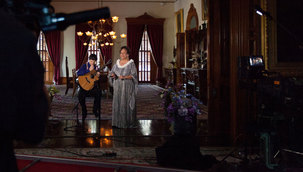
American Aloha: Hula Beyond Hawai‘i
The art of hula lives and thrives on the mainland U.S.
- Filmmaker(s)
- Lisette Marie Flanary
- Category
- Full-Length Film
- Subject Matter
- History, Arts & Music
- Featured In

- Region
- Polynesia
- Length
- 60 Minutes
- Year
- 2013
- Website
- www.pbs.org/pov/americanaloha/
"Hula is really the catalyst for people, no matter where they live, to connect with their home."
Lisette Marie Flanary, producer/co-director/writer
American Aloha: Hula Beyond Hawai‘i is a film that explores the art of hula as it lives and thrives on the mainland United States. The film focuses on three kumu hula, or master hula teachers, who continue to perpetuate the Hawaiian culture through the teaching of music, language, and dance in California. Using their individual styles of hula, ranging from traditional to contemporary, these kumu have put their heart and soul into creating an opportunity for people living on these distant shores to connect with their heritage and home in Hawai‘i.
As a filmmaker and a hula dancer, Lisette Marie Flanary creates documentary films that celebrate a renaissance of traditional Hawaiian culture in the modern world. A graduate of NYU’s Tisch School of the Arts, she is the writer, producer, and director of Lehua Films based in New York City. Her award-winning film, Nā Kamalei: The Men of Hula, broadcast on the Independent Lens series on PBS in 2008 and screened in numerous film festivals both in the U.S. and abroad. In 2007, Nā Kamalei: The Men of Hula received the Emerging Director Award at the New York Asian American International Film Festival, the Audience Award at the San Francisco Asian American Film Festival, Best Non-Fiction Feature at the VCFilmFest, and Best Documentary at the San Diego Asian American Film Festival. The film celebrates the revival of men dancing hula by following legendary master hula teacher Robert Cazimero and the only all-male hula school in Hawai‘i. Premiering at the Hawai‘i International Film Festival’s Sunset on the Beach in 2006, Lisette received the Hawai‘i Filmmaker Award and an Audience Award for Best Documentary. Lisette’s first feature documentary, American Aloha: Hula Beyond Hawai‘i, broadcast nationally on the award winning non-fiction showcase P.O.V. on PBS in 2003 as well as internationally on ITVS’ True Stories series in 2007. Winner of the CINE Golden Eagle Award, the film focused on hula and Hawaiian communities living on the mainland in California. It screened in numerous film festivals and is now available on Netflix.com. Currently, Lisette is in pre-production on the final film of her hula trilogy entitled Tokyo Hula, which focuses on the popularity of hula in Japan. She was also nominated for Best Director of a Documentary at the 2010 Los Angeles Asian Pacific Film Festival for One Voice.
Lehua Film's American Aloha: Hula Beyond Hawai‘i page
More About the Film
Director Lisette Flanary shares, "I was moved when I saw so many communities so far from home, and yet so passionate about their culture. Some people had never danced hula until they moved away from Hawai‘i and became homesick. For these people, hula is a mental, physical, and spiritual way of connecting to Hawaiian culture."Sissy Kaio, kumu hula of Hula Halau ‘O Lilinoe Na Pua Me Ke Aloha in Carson, California, provided the inspiration for the film at its start. Flanary shares, "When I met Sissy, I knew that something very magical would come out of making this film. She and her halau were so open, so giving, and so much the reason why this film was so important to make. As soon as you step into a room with her, it’s like you feel you are a part of the family."
A believer of the Hawaiian proverb "A‘ohe pau ka ‘ike i ka halau ho‘okapi (not all knowledge is taught in one school)," Flanary spent time conversing with other mainland kumu hula to better understand their philosophies behind hula, their personalities, and their personal history with the dance.
In order to keep the film to an hour in length for public television broadcast, Flanary and co-producer Evann Siebens narrowed in on three kumu hula to tell their story. Kaio was one of the three. The other two kumu were Mark Keali‘i Ho‘omalu, kumu hula of the Academy of Hawaiian Arts in Oakland, California and Patrick Makuakane, kumu hula and director of Na Lei Hulu I Ka Wekiu in San Francisco.
Flanary comments, "Our three kumu hula portrayed in the film say so much about the past, present, and future of Hawai‘i and Hawaiian culture. The hula is a living tradition that continues to evolve today because of Sissy, Mark, and Patrick. They have a foundation in tradition, but are not afraid to be risk takers and challenge themselves creatively."
For Flanary and Siebens, one of their goals was to present the challenges that exist for those living far from home and who still desire to maintain their culture. Flanary says, "The film is a strong testament to the growing sense of empowerment felt by the large and vibrant Hawaiian community living on the mainland that has often been judged by the islander community as 'not as authentic'. Cultural authenticity is a debate facing many cultures today. I hope this film will create a deeper understanding of Hawaiian culture as it lives and evolves away from the islands."

